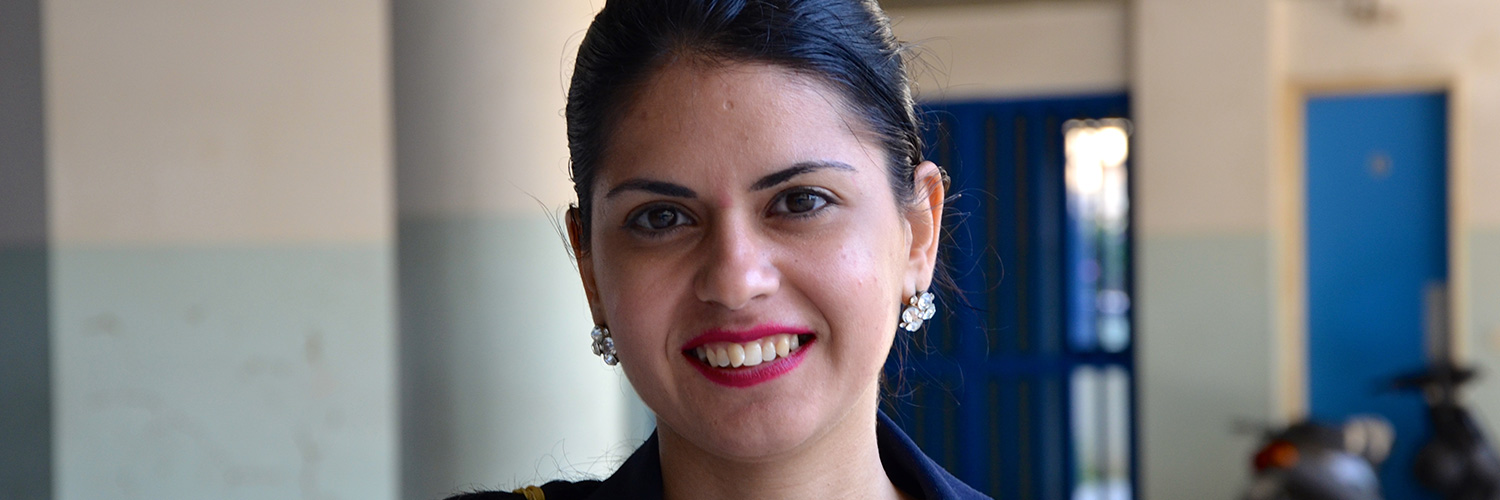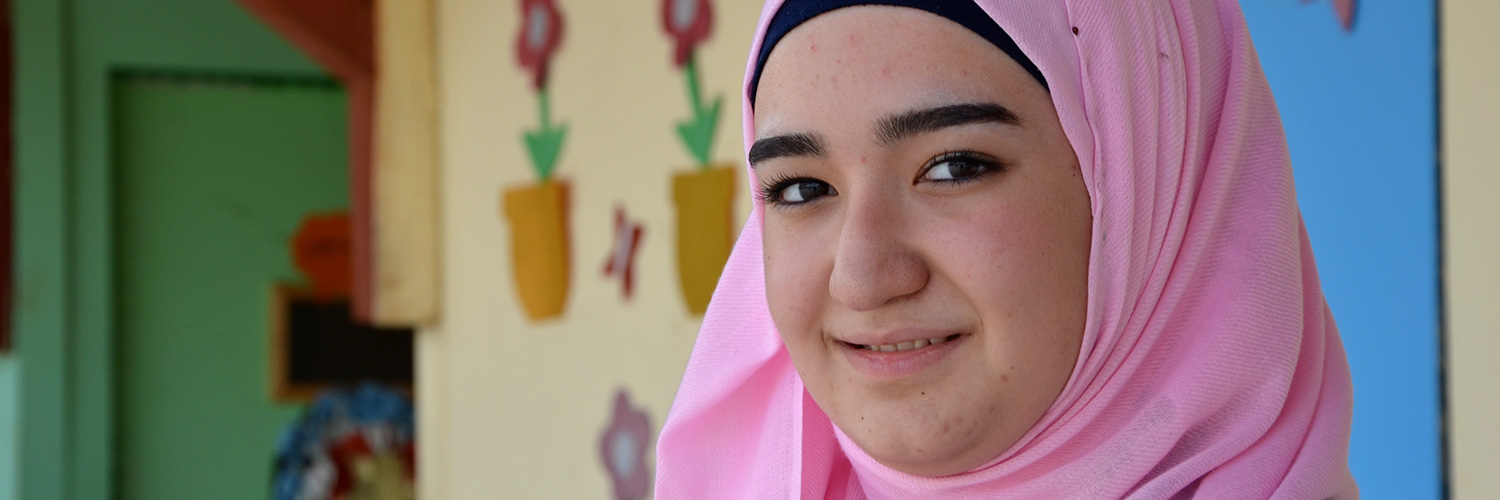These Syrian children are refugees in the town of Halba, Lebanon. They started going to school again in 2013.
Half a million of the Syrian refugees in Lebanon are children. Across the country, the authorities and the local population have organised for these kids to continue their schooling despite having been displaced by war. The education of Syrian children is not an invitation for them to settle permanently, however – rather, Lebanon hopes one day to see these educated refugees return to rebuild Syria.
The bell rings at Sin el Fil public school, east of Beirut. It is 2pm and Lebanese children are free to go home. They shove books into their bags and run down the corridor. Outside the sky is a vivid blue invitation to play, but back at school there is no time to daydream. As the dozens of yellow school buses leave, others arrive bringing Syrian students who take their places in the now vacant seats.
“A whole new day is starting,” says Rachel Chidiac, the headmaster of the school. Little by little, the classrooms fill up again and teachers start their lessons.
Lebanon opens its schools
to refugees
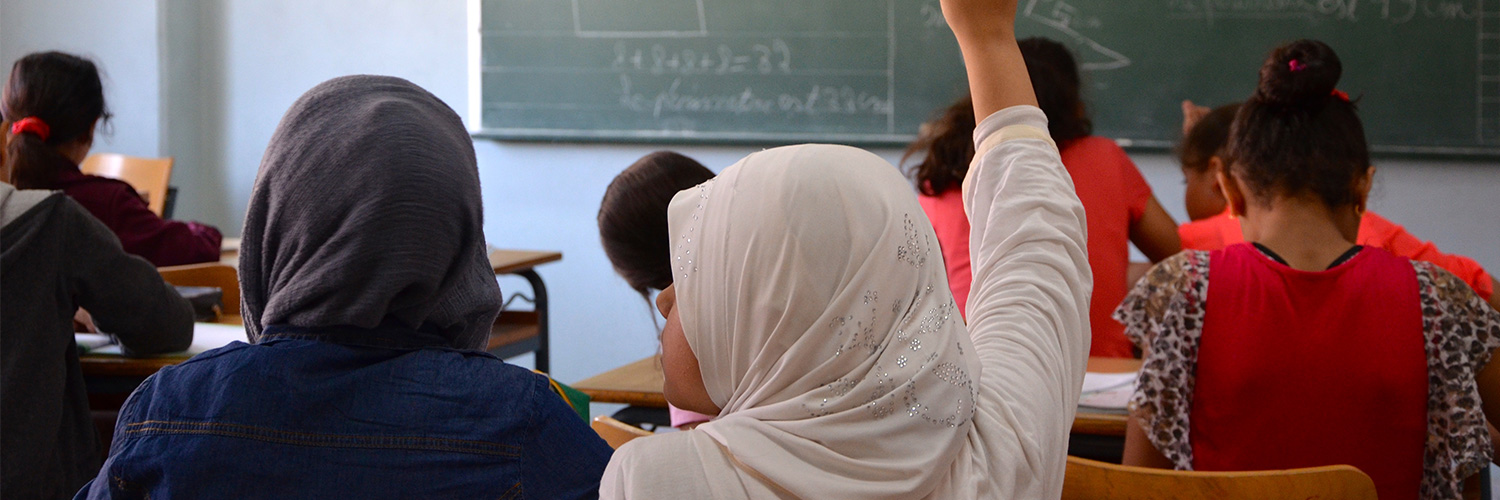
At the Sin el Fil public school, Syrian children go to class in the afternoon.
For the past three years, Lebanese public schools have worked double shifts to welcome displaced Syrian children. From 7:30am until 2pm it’s a normal day for Lebanese students and some foreigners – then from 2pm to 7pm, it is the Syrian refugees’ turn to learn.
This year, Syrian parents were able to register 158,000 children with the public schools free of charge. They make up a third of the students, a number that reflects the number of Syrian refugees now in the country. No other country in the world has such a high refugee density.

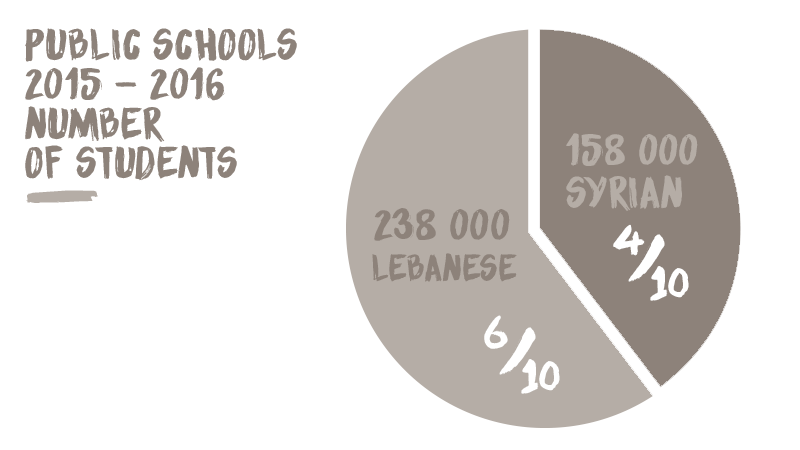
Source: Lebanese Ministry of Education
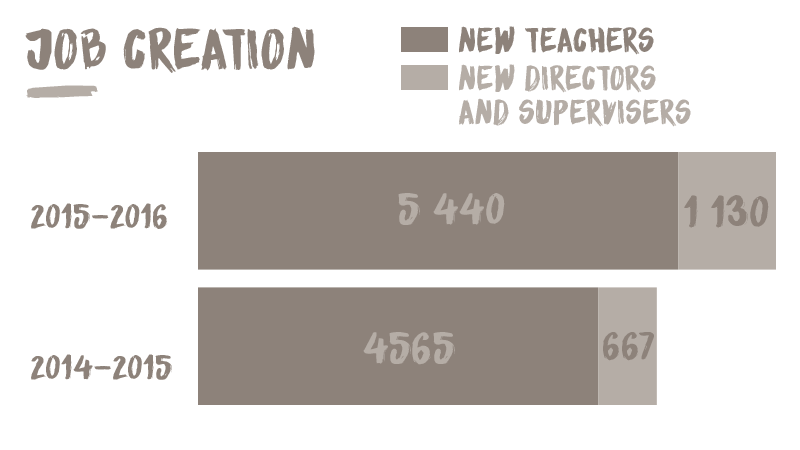
Source: Lebanese Ministry of Education

This administrative effort relies completely on international aid, which is evident in the classroom: bags, pencil cases, notebooks and pens are branded with the logos of the generous donors. The Lebanese ministry of education receives $363 (321 euros) a year for each Syrian child enrolled in the morning shift and $600 (530 euros) for those enrolled in the afternoon. This year, the authorities hired more than 5,000 new teachers to help out in the 238 schools that are offering double shifts.
Language barrier

Syrian students’ backpacks bear the logos of international donors.
For the Syrian children, their first challenge is language. In Lebanon science classes are taught in either French or English, whereas in Syria the whole curriculum is taught in Arabic.
In French class, the children repeat after the teacher: “Jad mange une tartine et boit une tasse de lait” (Jad eats a piece of toast and drinks a glass of milk). They repeat the phrase twice, then the teacher asks them what Jad ate in the morning. Silence. She has to explain in Arabic.
“When they arrive they don’t understand a word of French, they don’t even know the alphabet. But they learn very fast, especially the young kids,” she says.
In the classroom next door, 12-year-old Hala is taking a mathematics course in French. She came to Lebanon in 2014 with her family when their house in Aleppo was shelled. Today she stands at the blackboard and details the steps she took to find the perimeter of a rectangle in a language she first heard only two years ago.
“I like to go to school and would like to become an engineer,” she says.
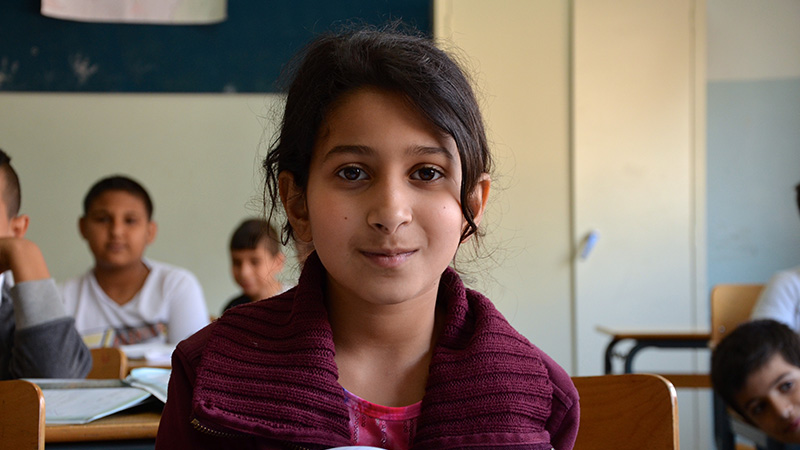
Hala is 12 years old. She comes from Homs and dreams of becoming an engineer.
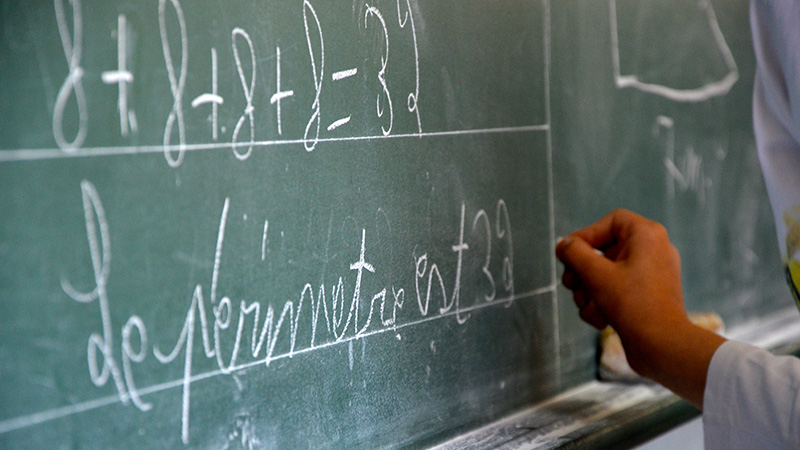
In Lebanon, science courses are taught in either French or English, whereas in Syria the whole curriculum is taught in Arabic.
Most of the Syrian children suffer from some kind of trauma. They have all lived through the war that has been ravaging their country since 2011. They all suffered from shortages of basic supplies and lived through shelling. Many children have been out of school for years or have never had a formal education. Many Syrian teens still don’t know how to read and write.
Jocelyne Abi Bahi is an educational adviser at the Sin el Fil school. She sees the students once a week to evaluate their psychological state through games and conversations.
“At the beginning they are hyperactive, sometimes aggressive. They all lack affection and self-esteem, but I feel that they improve quickly,” she says. For most of the children, school is a space where they can feel free, make friends, play and leave behind the adult world.
“A lot of them tell me about the war – they recall images of destruction, people who died. They also tell me that they are afraid to have to leave the school again,” she says.

‘It’s my duty to help them’
Jocelyne Al Bahi is an educational advisor at the Sin el Fil school. She provides Syrian kids with psychological support.
Politically, Lebanon remains neutral on the Syrian conflict. And for some, the presence of so many Syrians brings back painful memories of the Syrian occupation (1976 to 2005).
And while the refugees are welcome to go to school, long-term integration is not on the cards. Despite giving the children all the tools needed to become members of Lebanese society, the authorities – who do not recognise international conventions on refugee status – continue to emphasise that the country is not open for asylum.
This policy is motivated, in part, by the recent influx of hundreds of thousands of Palestinian refugees who have permanently settled in Lebanon. And it means that the Syrians are expected to go home as soon as possible. Every person we spoke to made the message clear: We are providing an education to enable the children to return and rebuild their country.
Bahia Baalbaky, a civil servant at the ministry of education, visits Rachel Chidiac’s office. While we speak with the headmaster, she sips Turkish coffee while filling in evaluation forms. After a while she jumps into the conversation.
“On Independence Day, I told myself that something wasn’t right. We were all standing in the courtyard singing the Lebanese national anthem, we had taken out the flags… everything seemed normal, but half the kids were Syrian! We should have been singing the Syrian national anthem!”
In Lebanon, the Baas anthem brings back sour memories of the Syrian occupation. “We do our best to welcome them, but in such proportions it’s unnatural,” she says.
Nearer the Syrian border, the numbers of refugees are even higher. The public school of Halba, in rural Akkar province, is located only a few kilometres away from the frontier.
Marc, my translator, grew up in Halba. His mother took him shopping in Homs on the weekends, where she said the vegetables were cheaper and of better quality. Marc also remembers that on the village square there was a statue of Bassel al-Assad, the oldest son of late Syrian president Hafez al-Assad, who would have succeeded his father had he not been killed in a car accident in 1984.
“When they left, we destroyed it. We didn’t have to lick their boots anymore,” says Marc as we drive past.
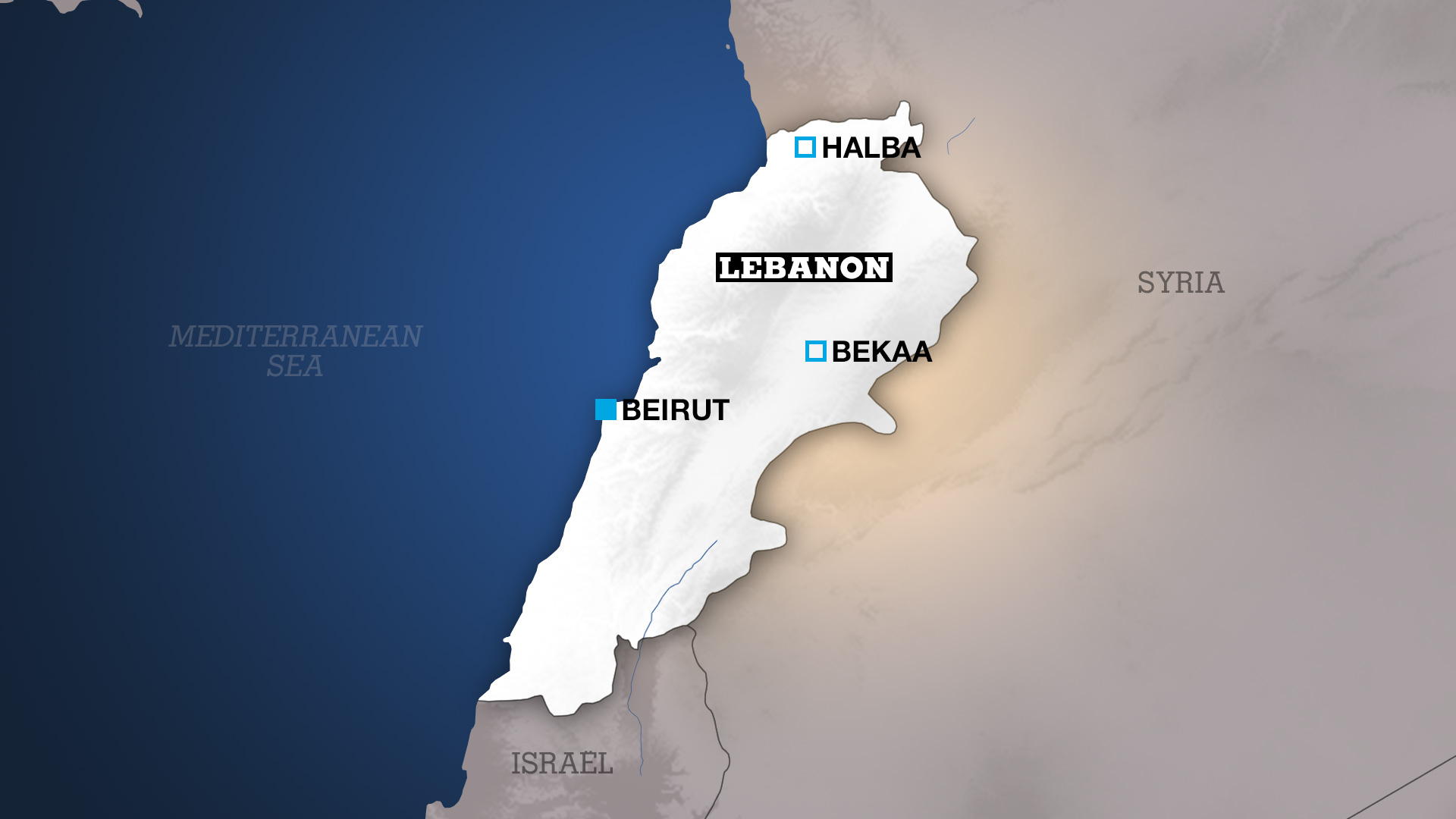
The school, which is just a few steps away, has 600 Syrian students and only 167 Lebanese. Headmaster Jamil Nabil says welcoming the Syrian refugees has saved the school from becoming marginalised – the Halba School has now reached its maximum capacity.
“When we opened the doors, we were definitely expecting a high number of registrations. But if you take a walk around the village, you see that there are still a lot of children loitering,” he says. “A second school wouldn’t be too much.”
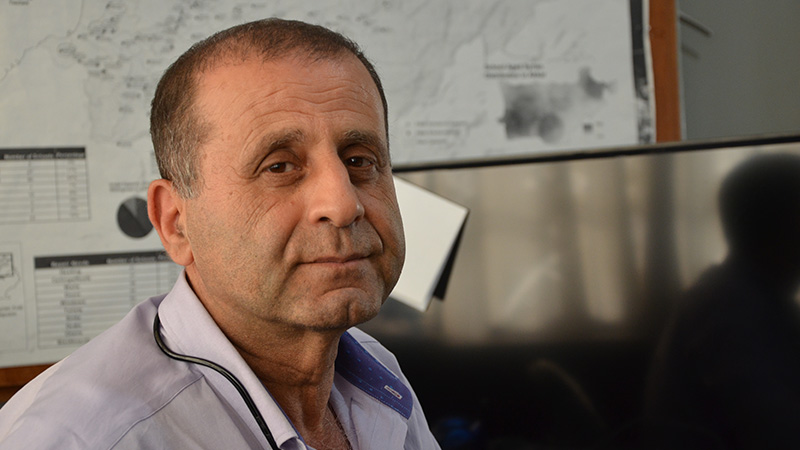
Nabil Jamil welcomes 600 Syrian refugees and 167 Lebanese children in the Halba public school
The headmaster says that the international aid designed to support the double shifts has also allowed him to renovate the school’s buildings. He had to open new classrooms and add chairs and tables to the chemistry labs to accommodate all of the new students.
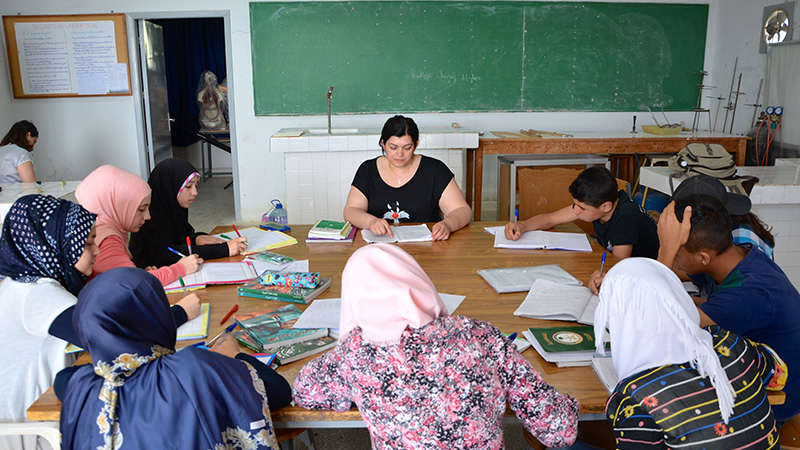
The Halba public school has reached full capacity. This literature class has to take place in the science lab.
Noujoud Yassine teaches in one of those labs. She and her 10 students sit between sinks and test tubes to discuss Arabic literature.
“Frankly speaking, I started teaching double shifts because I needed more money – but then I got hooked. I discovered that these kids are very motivated. They ask a lot of questions, they do their homework and they are really eager to learn. So today, I feel that it’s my duty to help them so that one day they can go rebuild their country,” she says.
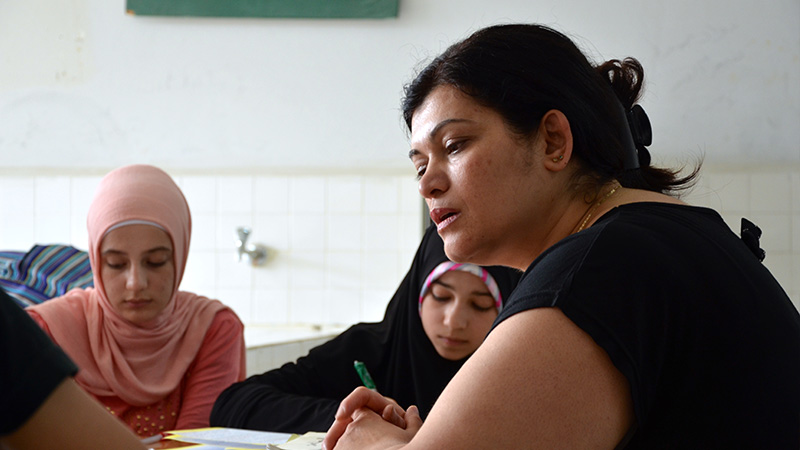
Noujoud Yassine chose to work with Syrian children.
But the refugees at this school have more financial troubles than those living in Beirut. For a lot of them, adult life starts at around 10 years old. In the classroom next door, eight children out of 20 already have a job.
Mohammad is 12. Every morning before school he works at a bakery for 20 euros a week.
“I don’t mind doing both, because I need to help my family,” he says, smiling. “But if I had the choice, I would pick school.”
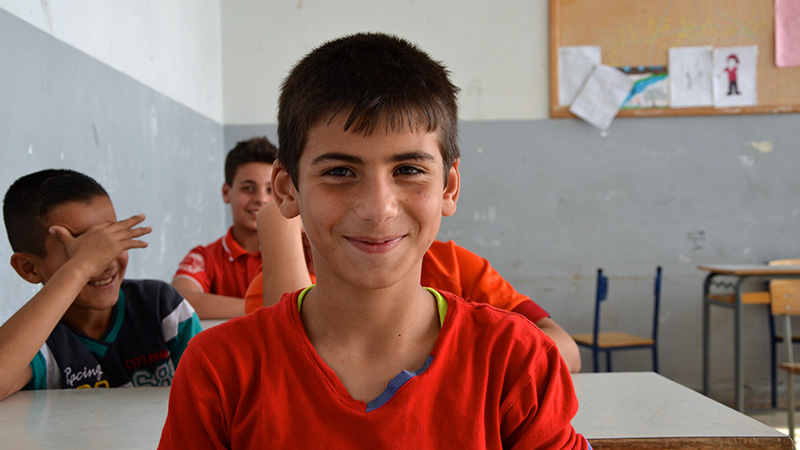
Mohammed is 12 years old. He works at a bakery before coming to school.
In addition to the 158,000 kids enrolled in Lebanese public schools, another 50,000 are attending private institutions. However, the United Nations High Commissioner for Refugees (UNHCR) says that there are more than 500,000 Syrians under the age of 18 living in Lebanon. This means that almost 300,000 children are not in school.
“We deny registration to no one. We are ready to open all the schools in the country for double shifts, but where are those kids?” asks Sonia Khoury, the coordinator in charge of the Syria response team at the Lebanese ministry of education.

Informal education networks
A class of Syrian children at the Sin el Fil public school.
Other refugees attend one of the hundreds of informal schools that have been established by the refugees themselves, Lebanese citizens or NGOs. Syrian professors can be found teaching inside a tent while at others the refugees are taught by European volunteers under the auspices of an international organisation. There are even local imams teaching the Koran. These informal schools are not illegal but their work is not recognised by the ministry of education – and the diplomas that students receive have no value.
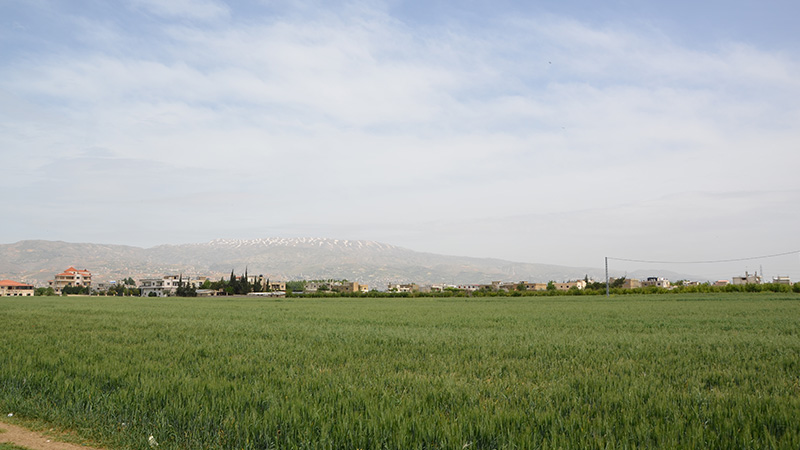
The Bekaa valley is the region that suffers the most from the refugee crisis.
The Bekaa region in the west of the country has been hardest hit by the refugee crisis. Tens of thousands of displaced Syrians have set up tents provided by the UNHCR on the side of the road and in the middle of fields. Since the beginning of the Syrian war, Lebanon has refused to build concrete refugee camps for fear that they might become permanent settlements. Refugee populations, therefore, live in “informal settlement areas”. This is where Nora Jumblatt decided to open six schools for 2,200 students for her Kayany foundation.
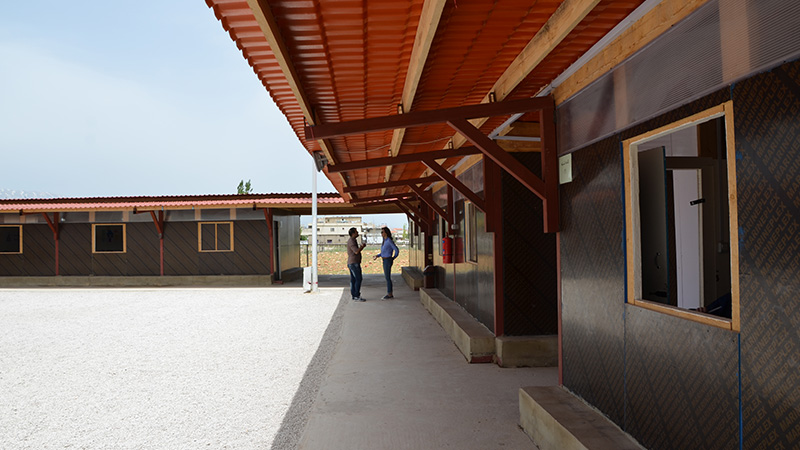
Lebanon refuses to build concrete refugee camps. Informal schools follow the same rule.
Jumblatt has been described as Lebanon’s most beautiful woman and is the wife of Druze leader Walid Jumblatt, head of the Progressive Socialist Party. But when she walks into the prefabricated classroom all of this is irrelevant. “Where are you from?” she asks the children. “I come from Damascus.”
It is a case of history coming full circle, as Jumblatt herself arrived seeking political asylum from Syria with her family in 1963. She is now welcoming a new generation of displaced people.
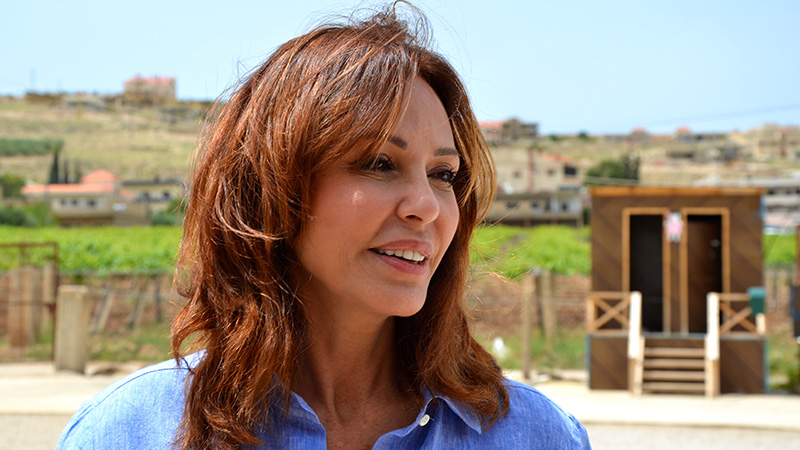
Nora Jumblatt has opened six schools for Syrian children.
Jumblatt’s refugee schools complement the public school system. For many of the families who live in the camps, access to education remains a challenge. The schools are often too far, bus fees too expensive and a lot of families are reluctant to see their children, especially the young girls, walk home alone at 7pm. Having classrooms at the camps, therefore, is a huge advantage.
Pakistani education activist and 2014 Nobel Peace Prize winner Malala Yousafzai has spoken in support of Jumblatt’s initiative, even putting her name on two of the schools.
Salam is a student at one of these “Malala schools”.
“I go to class here because it is close to where I live and because it’s hard for me to follow lessons in a language other than Arabic,” says Salam, 15, who comes from Homs. The informal schools often offer extra language classes during vacations so that students can meet the requirements needed to join the public school system.

Education remains a luxury
Salam is 15 years old. She studies at one of Nora Jumblatt’s Malala schools.
Despite the huge efforts of the Lebanese authorities and citizens, far too many children are still out of school or leave the classroom as soon as they know how to read and write. According to the ministry of education, only 40 percent of the Syrian children in Lebanon are receiving a formal education.
Abou Abdallah and his wife live in a 15-square-metre tent in the camp of Tal Abbas, near Halba. Out of their nine children, only three go to the nearest public school.
“I keep them in school as long as possible, but we do not have enough money for all of them to pursue their studies,” says their father, a former stonemason who came to Lebanon three years ago. “In Aleppo I had two houses and a car, but here I am forced to live with 135 dollars of aid a month. With that, I have to pay 35 dollars of rent for the tent. That leaves me with 100 dollars to feed 11 people for 30 days. It’s impossible,” he says.
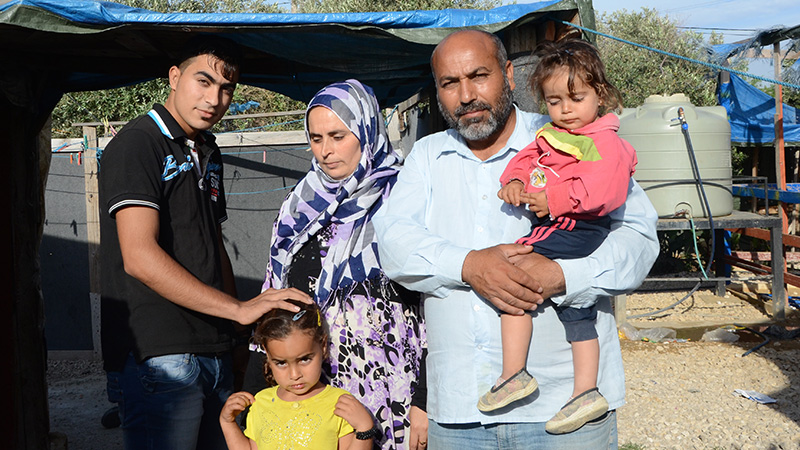
Abou Abdallah and his family stand in front of their tent in the Tal Abbas camp.
The eldest family members have to find jobs to help support the family. When one of Abou Abdallah’s sons is asked if he goes to school, he spontaneously replies “Yeart!” (I wish). Hussein is 14 years old and has never been to school in Lebanon. For the past three years he has been working in the fields, picking fruit and vegetables for a dollar an hour. He doesn’t complain about it, but says he would have liked to have another profession, “something to help people”.
In Lebanon school is compulsory until the age of 15 and child labour strictly forbidden. But throughout the country, teenagers like Hussein can be seen working in the fields, selling trinkets at crossroads, repairing cars or delivering bags of shopping. Few people are shocked anymore; child labour has become the norm.
While Abdallah was off to a camp reunion, a young woman came to sit with us. We bonded over small talk and we thought we were speaking to an adult. The young woman turned out to be only 14 years old, and she burst out laughing under her yellow veil. “I got married eight months ago,” she said, explaining that she was no longer a child.
She went on to tell her story in exchange for a promise not to identify her by name. When she was 10 her father died and the family house in Homs collapsed in a bombing, so she came to Lebanon with her mother and siblings. She remembers the first winter in the Bekaa Valley, when there was so much snow they couldn’t leave the tent. She also remembers trying to register at school, but was told that since she already knew how to read and write she had to give up her spot for those who didn’t.
After three years her mother told her it was time for her to get married. She didn’t want to, but given the family’s dire circumstances she did not have the heart to refuse. Since then she has found a new passion: makeup and beauty tricks. There is little she doesn’t know about nail polish and eyebrow removal, and she hopes one day to open a salon.
Despite persistent feelings of resentment towards Lebanon’s former occupier and the enormous pressure that displaced Syrians are putting on Lebanon’s limited resources, outright conflict between Lebanese citizens and the refugees is rare. The country, supported by its international partners, has chosen to bet on the future – a future in which each party is invited to go its own way, but one that both prepare for sitting side by side on a school bench. School has become more than a place to gather academic knowledge. For children traumatised by war, it is a place where they are allowed to have a normal life.
At the same time, too many children are still not receiving an adequate education. According to a recent study by the Saint Joseph University of Beirut, “Children outside school today will be harder to enrol as they fall into vicious cycles – child labour, child marriage, pessimism – that hinder them from entering school and increase their reasons to stay out of the system”.
Reintegration and rebuilding remain the ultimate goals, but the road ahead is tough.












